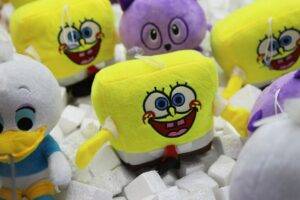Nostalgia Marketing: How to Implement Emotion into Your Business

<?xml encoding=”utf-8″ ?????????>
Marketing is a matter of storytelling and what’s better than using a story that your customers already know and love?
With the new release of Spongebob bath bombs and soaps from Lush Cosmetics, the concept of nostalgia marketing is being brought back into the limelight.
Nostalgia marketing is one of the great tools big companies are using to keep hold of their loyal customers and to grab the attention of others. But how can you use nostalgia marketing to your benefit?
Why nostalgia works
Nostalgia works as a marketing technique that appeals to your customer’s emotions. It gives your customers a feeling of longing and a reminder of fond memories, making your product stick in their minds as something comparable to that happiness. Familiar faces, such as characters from childhood, can be one way of encouraging this longing, reminding your customer of happy times.
Alice Cass, Digital and Social Marketer at UK Greetings, says: “Investing in the characters known and loved by your customer demographic is the perfect way to incorporate nostalgia into your marketing and business strategy. Nostalgia marketing is an excellent tool, bridging the gap between the past and present evoking a sense of familiarity and trust between a business and its customers.”
According to the Harvard Business Review, studies conducted on nostalgia show that customers desire money less after a nostalgic event – meaning they are more likely to spend more when reminded of happy times.
Nostalgic characters can include Groovy Chic from the 1990s, Boofle from the mid-late 2000s who has become recognisable during birthdays and special celebrations and special celebrations, and classic cartoon characters such as Scooby Doo, the Rugrats, and other recognisable faces.
Even big brands like Coco Cola, Nintendo, and McDonalds have been known to jump on the nostalgia marketing hype – seeing results through bringing their history and their customers’ childhoods into their brands.
What counts as “nostalgic”?
Well, this depends on your target customer, recent nostalgia marketing has focused on the late ‘90s, with Generation Z being the front runners in commanding the trend, despite them not being born during this time period.
The icons of this time persist as a brilliant way to market your business, having a profound impact on your customer.
In short, nostalgia is something that reminds someone of the past – and while it usually is of their past, it doesn’t have to be. Stories from parent’s past, for example, can be just as effective. Popular shows like Stranger Things are helping to boost this desire for nostalgia, even during a time period many of the watchers might not remember, the ‘80s.
How to bring nostalgia into your business
Marketing
Harnessing the nostalgic power of these characters and time periods can be done by developing them into your marketing strategy. However, it is important to note that characters likely have a trademark and copyright against them, so gaining appropriate licensing is a must.
Whether posting online content or hosting in-house events for children, your characters can come to life and help promote your business. Perhaps, your bar has Groovy Chick Thursdays as Groovy Chick herself hands out cocktail discounts nearby, for example.
Products
Your products can even have a classic character or nostalgic twist to them. Whether this is a greeting card featuring your favourite childhood characters, such as Elliot & Buttons or Bubblegum, or you commemorate a time in history with your products.
Companies such as Adidas have used the nostalgia marketing technique in their own trainers. As part of the 45th anniversary of Billie Jean King’s iconic tennis win, Adidas launched their own trainers with her face and initials on. This campaign saw a 20% boost in shoe sales during the time – showing the customer desire to be connected to history.
Company history
Another way to bring nostalgia into your businessis by bringing the past into the present. Customers love a good throwback, so why not embrace this trend by highlighting the amazing history that your own company has.
Whether it is a long family history that started the business off right or a collection of previous partnerships which bring back a friendly reminder – your business could have a lot of inspiration to draw from.
Nostalgia has been proven to make customers want to spend more, but implementing this into your marketing strategy isn’t so easy. Some companies go down the route of paying for copyright licensing for characters, while others bring their own history into the mix to promote a community feeling within their customers. Whichever route you choose, investing in some nostalgia not only appeals to your customers’ emotions but also to their wallets.




